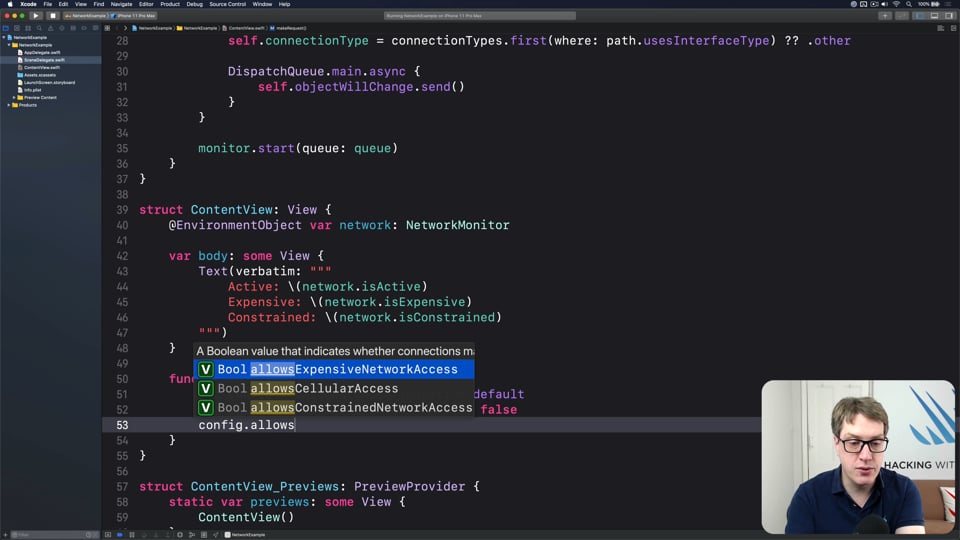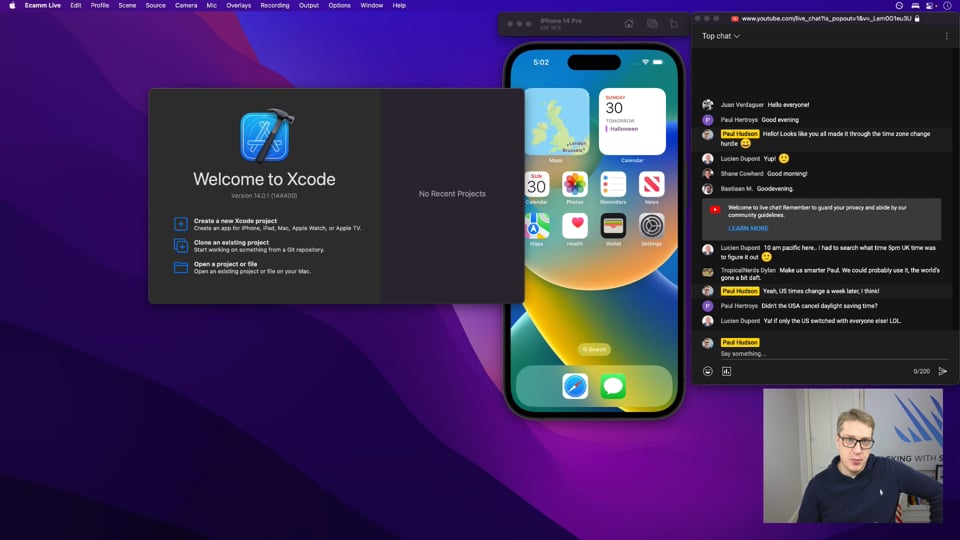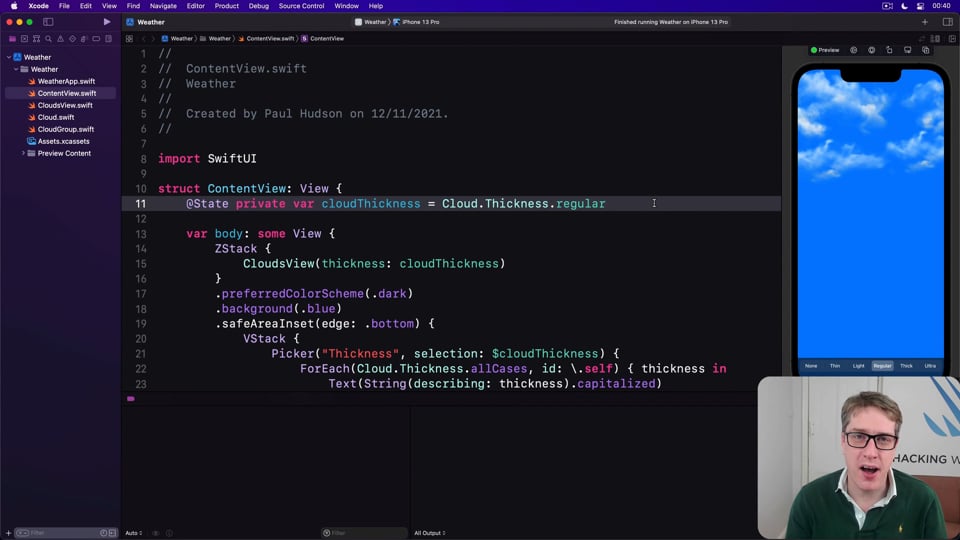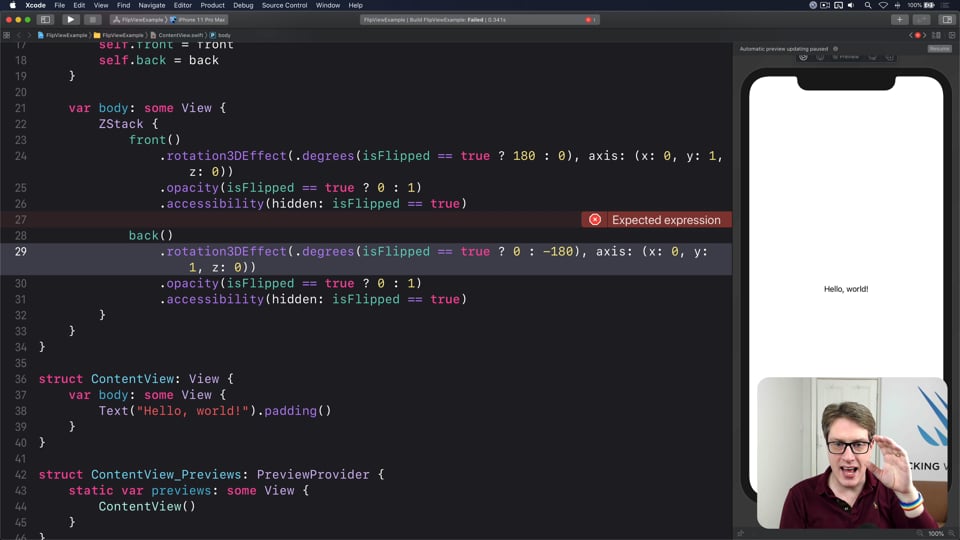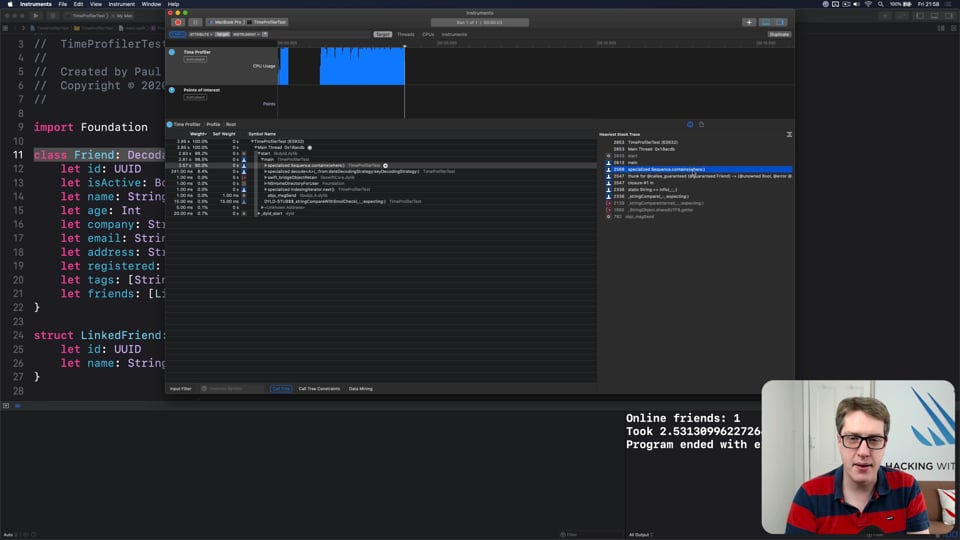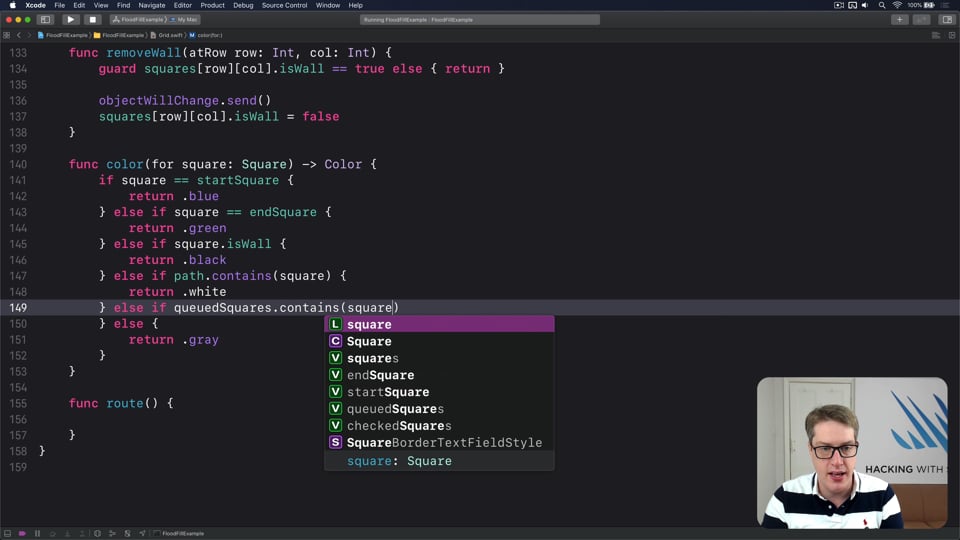Interview questions: Introduction
Getting ready for a job interview is tough work, so I’ve prepared a whole bunch of common questions and answers to help give you a jump start. But before you get into them, let me explain the plan in more detail…
Watch the video here, or read the article below
Once you’ve polished your resume, prepped your portfolio, and applied for the job of your dreams, you still have one major hurdle to get through: the interviews, which might be an hour if you’re lucky, or potentially a day or two if it’s for a bigger company or a more senior role.
I’ve done a lot of job interviews in my time, and I’m also responsible for maintaining the world’s largest collection of interview questions for Swift developers – questions that are specifically and directly used by countless companies around the world. So, I tell you the kinds of things you’re likely to be asked in your interview, but that’s not enough by itself.
Yes, if I were to tell you all the most popular interviews questions, it would give you something to plan for and prepare for, and hopefully would give you extra confidence when walking into the interview that you have good answers ready. But it wouldn’t do much to help you structure those answers – it wouldn’t give you guidance on what to include in your answer, or how to structure things, and so on.
So, this section of Hacking with Swift+ is designed to solve that problem: not only have I selected the most common interview questions for you, but I’ve also answered them in detail, explained the approach I would take, and often provided code samples to, so you have the complete toolkit needed to really ace your next interview.
You’ll see a few things come up regularly, and I want to repeat them here:
- There’s a lot of value in being pragmatic – in not sticking to one fixed idea because it’s your favorite thing, but instead being able to discuss the advantages and disadvantages of multiple concepts.
- It’s often a good idea to list a few possible answers to a question, then pick one or perhaps two to zoom in on and discuss in detail.
- Giving a simple, factual answer matters, and is usually the first thing you should do, but make sure you follow it up with some hands-on examples you have from real-world projects, and ideally also some discussion of any nuances or complexities that show you have experience.
- Although I’m not a big fan of asking folks to write code while someone is watching them, it’s a good idea to have some simplified examples you can present if needed.
- All the best questions lead to open discussion where the interviewee can focus on what interests them or go off on tangents, so look for areas where you can explore topics together and show off your knowledge.
There’s one bonus tip that isn’t about iOS: if they ask you whether you’d like some coffee or something, say yes. I don’t care if you don’t want coffee – ask for tea, or water, or soda, or something, just take the drink. Why? Because when they ask you a tough question, you can take a sip of your drink and pause for just a moment, and in doing so buy yourself a few seconds to phrase your answer as best as you can. Seriously, it works – take the drink!
If you liked this, you'd love Hacking with Swift+…
Here's just a sample of the other tutorials, with each one coming as an article to read and as a 4K Ultra HD video.
Find out more and subscribe here
FUNCTIONAL PROGRAMMING
FREE: Functional programming in Swift: Introduction
Before you dive in to the first article in this course, I want to give you a brief overview of our goals, how the content is structured, as well as a rough idea of what you can expect to find.
HIGH-PERFORMANCE APPS
FREE: Using memoization to speed up slow functions
In this article you’ll learn how memoization can dramatically boost the performance of slow functions, and how easy Swift makes it thanks to its generics and closures.
ULTIMATE PORTFOLIO APP
FREE: Ultimate Portfolio App: Introduction
UPDATED: While I’m sure you’re keen to get started programming immediately, please give me a few minutes to outline the goals of this course and explain why it’s different from other courses I’ve written.
CUSTOM SWIFTUI COMPONENTS
FREE: Creating a WaveView to draw smooth waveforms
In this article I’m going to walk you through building a WaveView with SwiftUI, allowing us to create beautiful waveform-like effects to bring your user interface to life.
NETWORKING
FREE: User-friendly network access
Anyone can write Swift code to fetch network data, but much harder is knowing how to write code to do it respectfully. In this article we’ll look at building a considerate network stack, taking into account the user’s connection, preferences, and more.
ADVANCED SWIFT
FREE: How to use phantom types in Swift
Phantom types are a powerful way to give the Swift compiler extra information about our code so that it can stop us from making mistakes. In this article I’m going to explain how they work and why you’d want them, as well as providing lots of hands-on examples you can try.
ADVANCED SWIFT
FREE: Making the most of optionals
Swift’s optionals are implemented as simple enums, with just a little compiler magic sprinkled around as syntactic sugar. However, they do much more than people realize, and in this article I’m going to demonstrate some of their power features that can really help you write better code – and blow your mind along the way.
INTERMEDIATE SWIFT
FREE: Understanding generics – part 1
Generics are one of the most powerful features of Swift, allowing us to write code once and reuse it in many ways. In this article we’ll explore how they work, why adding constraints actually helps us write more code, and how generics help solve one of the biggest problems in Swift.
FUNCTIONAL PROGRAMMING
FREE: Transforming data with map()
In this article we’re going to look at the map() function, which transforms one thing into another thing. Along the way we’ll also be exploring some core concepts of functional programming, so if you read no other articles in this course at least read this one!
DATA STRUCTURES
FREE: Trees
Trees are an extraordinarily simple, extraordinarily useful data type, and in this article we’ll make a complete tree data type using Swift in just a few minutes. But rather than just stop there, we’re going to do something quite beautiful that I hope will blow your mind while teaching you something useful.
SWIFTUI SPECIAL EFFECTS
FREE: Shadows and glows
SwiftUI gives us a modifier to make simple shadows, but if you want something more advanced such as inner shadows or glows, you need to do extra work. In this article I’ll show you how to get both those effects and more in a customizable, flexible way.
INTERMEDIATE SWIFT
FREE: Understanding assertions
Assertions allow us to have Swift silently check the state of our program at runtime, but if you want to get them right you need to understand some intricacies. In this article I’ll walk you through the five ways we can make assertions in Swift, and provide clear advice on which to use and when.
INTERMEDIATE SWIFTUI
FREE: Creating a custom property wrapper using DynamicProperty
It’s not hard to make a basic property wrapper, but if you want one that automatically updates the body property like @State you need to do some extra work. In this article I’ll show you exactly how it’s done, as we build a property wrapper capable of reading and writing documents from our app’s container.
LIVE STREAMS
Quick Spell
SwiftUI is a really great framework to make simple games with, and to demonstrate that we’re going to build a word game in hardly any code, then add some more advanced features to make it slicker.
REMAKING APPS
Creating a day/night cycle
One of the most beautiful parts of the Weather app is the way it smoothly transitions between day and night – it doesn’t just go from black to blue, but instead mimics both sunrise and sunset, smoothly animating between the two. In this tutorial we’re going to recreate that same effect in our own app.
LIVE STREAMS
Share a Meal
In this stream we'll build an app to locate food banks near to users, so they can donate needed items. This uses an external API that's a little bit inconsistent, so we'll need to explore Codable alongside maps, networking, and more.
CUSTOM SWIFTUI COMPONENTS
Creating a FlipView to provide a card flip effect
If you’re looking for a simple and fun special effect to add to your code, I’ve got just the thing for you. In this article I’m going to walk you through building a FlipView with SwiftUI, which will encapsulate how to move between a front view and a back view using a 3D flip animation.
HIGH-PERFORMANCE APPS
Identifying performance hot spots with Time Profiler
Instruments gives us a range of tools for finding performance problems, and in this article we’ll be looking at how the Time Profiler instrument can point out problems in seconds.
SOLUTIONS
Checkpoint 1
Checkpoint 1 of Swift for Complete Beginners asks you to create an Xcode playground able to convert any value of Celsius into Fahrenheit, then print the result. Let’s solve that now…
ALGORITHMS
Flood fill path finding
The flood fill approach to path finding is one of the easiest to learn, works great in games with small maps, and is also commonly used in software – filling a picture with color, for example. In this article I’ll walk you through how the algorithm works, and help you build a visual representation of it in action.




